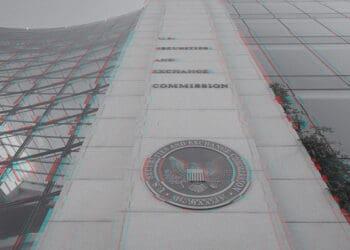The SEC recently adopted the Fair Value Rule, requiring fund investments to be fair valued where market quotations are not “readily available.” Nutter McClennen & Fish’s Mark Jensen and Ian Roffman discuss the effects this change will have.
Sometimes the launch of a new regulation has ripple effects nearly as important as the regulation itself. The SEC’s adoption of Investment Company Act Rule 2a-5 regarding valuation of hard-to-price securities in mutual fund portfolios (“Fair Value Rule”) is a case in point.[1]
Fair valuation is part of the daily securities valuation process that every mutual fund must perform to determine its share price (net asset value, or NAV). For many securities, including most securities listed on stock exchanges, current market prices are readily available, and mutual funds are required to use them. But for infrequently traded securities for which current market prices are not readily available, or in situations when after-hours events make the last market valuation unreliable, the Investment Company Act requires funds to use a “fair value” determined in good faith by the fund’s board of directors (Section 2(a)(41)).
As an effort to consolidate SEC staff guidance and codify best practices developed by the mutual fund industry, the new Fair Value Rule was not considered highly controversial. Fund boards will be permitted to delegate the technical work of securities valuation to the fund’s investment adviser or other experts, while the board and adviser take on new formal oversight requirements similar to those of other recently adopted Investment Company Act rules, including the liquidity and derivatives risk management rules.
In responding to comments on the initial rule proposal, however, the SEC dropped in two somewhat surprising statements which may have ripple effects beyond fair valuation itself:
1. NAV Error Correction Standards Go Public
It is a truth universally acknowledged (but never before publicly mentioned by the SEC) that (a) an NAV pricing error of greater than one penny ($0.01) per share should be corrected by having the fund’s adviser or administrator reimburse the fund for any detrimental impact; and (b) if the error also exceeds half of one percent (0.5 percent) of the NAV, the adviser or administrator must go further and reprocess all investor purchases and redemptions at the correct price. In reliance on highly informal discussions with SEC staff, thousands of mutual funds have adopted this standard in their policies and procedures, and many have spent a lot of money remediating errors on the basis of those measures.
We were glad to see that the Commission finally made favorable, albeit qualified, mention of this standard. While it is not part of Rule 2a-5 and was mentioned in the narrower context of board reporting (rather than financial remediation and reprocessing of NAV errors), the Commission finally acknowledged that relying on the standard for board reporting purposes “would not be unreasonable.”
“Some commenters had suggested that we set an NAV error threshold, similar to that generally utilized in the industry at $0.01 a share or 0.5 percent of the NAV, as the threshold for prompt reporting [of material discrepancies to the fund board]. While we decline to establish that specific standard as what constitutes a ‘material error in the calculation of net asset value’ for purposes of the final rule, we agree that relying upon that standard would not be unreasonable.” – Adopting Release, p. 72.
It’s an enormously consequential standard, affecting both the remediation cost and the risk of liability for fund service providers. An error exceeding one penny “merely” creates an unexpected, avoidable expense for the fund’s adviser or administrator. An error exceeding 0.5 percent creates an expense and a project. To reprocess, the administrator must re-run the entire NAV process for every day on which the material error persists, a process that may also impose reprocessing requirement upon intermediary firms.
Further, if an NAV error occurs at the end of a fiscal year or other reporting period, it may also require review or restatement of investment performance and financial statement reporting. The SEC has also brought actions, even in recent years, for failure to fully remediate an NAV error. The statement in the Adopting Release does not relieve fund managers and boards of their responsibility, but gives clearer guidance on how to carry it out.
2. By Expanding the “Fair Value” Universe, The Rule Limits Interfund Trading
The final Rule 2a-5 also retains the proposed language that all securities must be fair valued unless they traded in active markets on the day they are valued. In response to comments, the Commission expressly confirmed the biggest practical effect of this adoption: to sweep into the fair value process thousands of investment grade corporate and municipal bonds, which are in general reliably priced by reference to trading in other comparable securities (“evaluated prices”). These bonds are in the shallow end of the debt security swimming pool: They are issued by creditworthy borrowers, and their prices change based on interest rate movements rather than factors unique to particular borrowers. But because many such bonds do not trade daily (they are generally held by long-term investors), they are often priced using evaluated prices.
While it is not very surprising that the SEC adopted this part of the rule as proposed, notwithstanding the limited precedent for it, the SEC went on to say that this standard will also have the effect of limiting interfund trading under rule 17a-7 (Adopting Release, pp. 92-94). Cross-trading between funds in the same complex can save transaction costs for both funds and provide liquidity to the selling fund, but because of potential conflicts of interest between the funds and their manager, rule 17a-7 permits cross-trading only based on “the independent current market price” of “a security for which market quotations are readily available.” In adopting rule 2a-5, the SEC expressly ruled out reliance on “evaluated pricing,” no matter how independent or objective, for pricing based on “readily available” market quotations. The Commission confirmed that this also precludes use of evaluated prices in cross-trading under 17a-7. In other words, notwithstanding the well-established and objective methods for evaluating bond prices, the Fair Value Rule will have the effect of requiring fund complexes to forego fund cross-trading as a source of supply and liquidity for any securities for which they would have to rely on evaluated prices.
There is a glimmer of hope on this issue, however, as the Commission promises a re-evaluation of Rule 17a-7 in the near future.
[1] Good Faith Determinations of Fair Value, SEC Release No. IC31428 (December 3, 2020) (“Adopting Release”).



 Mark Jensen is of counsel in
Mark Jensen is of counsel in  Ian Roffman chairs the firm’s Securities Enforcement and Litigation practice group and is a member of the Executive Committee.
Ian Roffman chairs the firm’s Securities Enforcement and Litigation practice group and is a member of the Executive Committee.











